To discover …
… in Houplin-Ancoisne
The name "HOUPLIN" mean "on water", evidence that the first settlements was installed near the Deûle, or rather marsh that border them.
According to archeological experts, HOUPLIN-ANCOISNE is a very rich prehistoric site, especially Neolithic and it is not uncommon that searches are initiated before various public or private accommodations. The presence of lakeside villages, but also Gallo-Roman or Middle Age ruins, was highlighted.
The church of St Martin in HOUPLIN testament to our rich past. Classified historical monument, it dates from the Middle Age. There is also a beam which mentioned the year 1412, date of birth of Jeanne d'Arc. With it romanesque style, we can see it in the landscape with it particular steeple: a rectangular block overcame a triple crown of his lampshade, supporting a gallery of arches that dominates the arrow.
The sector of ANCOISNE has also his church, the Church of Notre Dame de Lourdes, most recently because of it dates of 1901. More monumental, it is Gothic style.
All these riches bequeathed to us by history and landscape have been effectively completed in 2004 with « Mosaïc, Jardin des Cultures », a jewel of the Deûle Park and Natural Area Metropolitan, and inaugurated as part of operation « LILLE, European Capital of Culture ».
HOUPLIN-ANCOISNE has kept a very green, quiet and relaxing environment away from the pollution of major cities, despite being only 10 km from Lille. Trails and hiking tours were arranged with beautiful ballads and equestrian trails. The cyclists will also find their happiness.
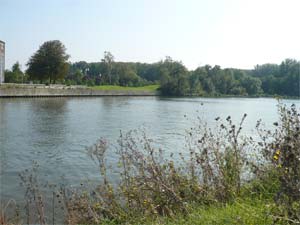
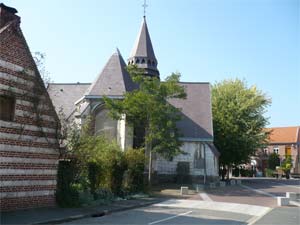
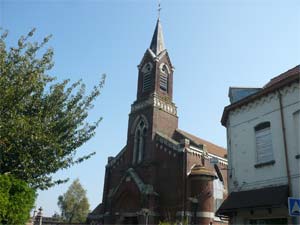
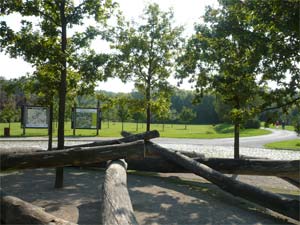
… in Seclin (3 km)
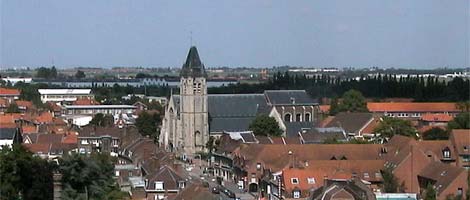
source : Collégiale Saint-Piat - Office de Tourisme de Seclin
Mélantois capital, Seclin occupies a privileged geographical position, south of Lille and near the main lines of communication. City in the country of a rich heritage steeped in history dating back to 100,000 years.
Three Historical Monuments: the Saint Piat (thirteenth century) built on the site of the tomb of Saint Piat but also Notre Dame hospital founded in 1246 by the Countess Marguerite of Flanders and the portal monumental cemetery built around 1808 typical of revolutionary style.
Two beautiful museums also radiate, the Domaine Mandarine Napoleon and Fort Seclin 1914-1918.
Domaine Mandarine Napoleon
Genuine Farm Square, the area meet in a harmony of bricks and greenery, elegance and historic charm of an old sugar mill.
The Napoleon Museum brings together more than 400 pieces of collection: real fun and educational attraction surrounded by the tasting room, his shop and its museum.
Fort Seclin
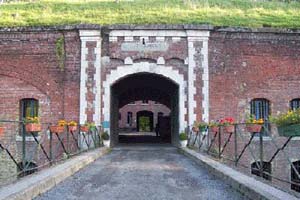
source : Office de Tourisme de Seclin
Its vaulted rooms host authentic couplers artillery, the main types of guns of the time since the 75 "père la victoire" until 155 Schneider, prints of great military painters, a comprehensive collection of uniforms and weapons, a saddle retracing the period 1870 to 1918 and a Renault FT17 tank. (And many other equipment!) Moreover, the fort is the only remained intact near Lille. It embodies the style of architecture of Séré de Rivière. Thus the visist of the museum are complemented by the discovery of the fortification, when time permits.
Situation : Fort Duhoux — Chemin Fort.
… in Lille (10 km)
The city hall and its belfry
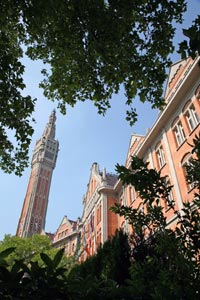
source : © Maxime Dufour Photographies
Office de Tourisme Lille
The Belfry in Lille is built from 1929 to 1931, and inaugurated in 1932. This is the first French building over 100 meters entirely made of reinforced concrete. With 104 meters, it is the highest tower in the region. Designed as a « skyscraper in Flanders », it is both a symbol of communal liberties and a benchmark for the Lille metropolitan area. At its base are carved giants founders of the city, Lydéric and Phinaert. It is classified as World Heritage Site by Unesco since September 2005, with 22 other belfries in northern France.
Situation : Place Roger Salengro
La Citadelle
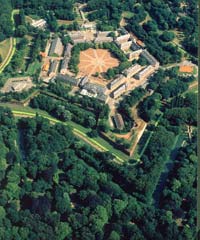
source : Office de Tourisme de Lille
It is built from 1667 to 1670 by Sebastien le Prestre, Marquis de Vauban, on the orders of Louis XIV which just conquer the city. It is a city in the city, surrounded of bastions forming a five-pointed star. Described as « Queen of Citadels », Vauban himself said it was the greatest and most complete of the kingdom. It is a masterpiece of fortification, urban art and architecture of France.
Situation : Avenue du 43e régiment d'Infanterie
Maisons Folie
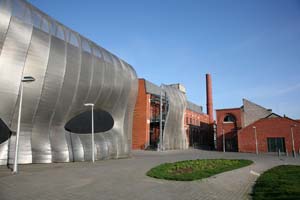
© Maxime Dufour Photographies - Office de Tourisme Lille
At Lille 2004 European Capital of Culture, 12 Maisons Folie have been created across the Nord-Pas de Calais and Belgium. These are new places of creation, dissemination and meeting at the heart of neighborhoods, made available to artists, associations and residents. They offer exhibition spaces, rehearsal studios, artists residencies, theaters, etc…
In Lille, both Maisons Folie have invested rehabilitated brownfields. This one of Wazemmes is a former spinning, complemented by a contemporary building made by the group of Dutch architects NOX, identifiable with corrugated metal hull. The basement arched brick of the old plant now hosts a hammam East. In the district of Moulins, it is an old brewery-malting, which buildings organized around a central courtyard still witness the care given to architectural details of industrial buildings of the nineteenth century.
Situation : Maison Folie de Wazemmes : 70 rue des Sarrazins
Situation : Maison Folie de Moulins : 47-49 rue d'Arras
The Opera

source : © Frédéric Lovino - Opéra de Lille
In 1907, following the burning of the theater, the architect of Lille Louis-Marie Cordonnier is responsible for building an opera, in the spirit of the achievements of Charles Garnier and Monte-Carlo. Directed just before the First World War, it was inaugurated by the Germans in 1914 and again by the French in 1923.
Opened in December 2003 after six years of restoration, the interior presents a monumental staircase and a richly decor in Louis XVI style made of marble, stucco, bronze, gold and sparkling crystals. The Italian room is one of the last examples built in France, and can accommodate 1 136 spectators.
Situation : Place du Théâtre
Vieille Bourse
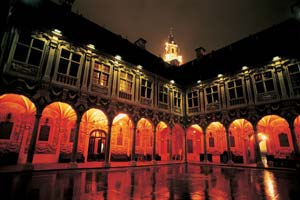
source : Office de Tourisme de Lille
This is undoubtedly the most beautiful monument in the city.
Its construction is decided in 1651 to provide shelter for people in trade and finance, previously used to meet in full wind. Its implementation is entrusted to architect Julien Destrée in 1652 - 1653.
Under its apparent unity, it is actually composed of twenty-four identical houses, built at the expense of twenty-four merchants. They form a quadrangle around a courtyard with arcades, whose calm contrasts with the animation of surrounding streets.
Situation : Place du Général de Gaulle (Grand Place).
Palais des Beaux-Arts
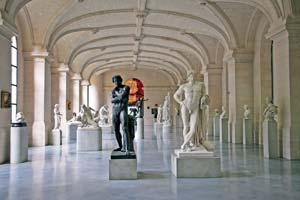
source : © Don Muschter - Office de Tourisme Lille
By the size of its permanent collections, the Palais des Beaux-Arts in Lille is regarded as the second general museum in France, just after the Louvre.
The building, constructed between 1885 and 1892, is emblematic of monumental architecture from the late nineteenth century.
Completely refurbished in 1997, its 22 000 m² home to prestigious collections of European painting (Rubens, Van Dyck, Goya, Delacroix ...), some essential representations of French painting of the nineteenth century (Belisarius of David, L'après-dînée à Ornans by Courbet, Le Sommeil de Puvis de Chavannes ...), a leading firm of drawings (whith 40 sheets of Raphael), a gallery of sculptures (Carpeaux, Rodin, Claudel, Bartholdi …) and ceramics of the seventeenth and eighteenth centuries.
Note: the presentation of plans in relief (models of the eighteenth century) of fifteen fortified cities in northern France and Belgium.
Situation : Place de la République
Museum of Natural History and Geology
In the area of the former faculties, this museum offers a journey through time and continents.
The original collections of zoology and geology have been gradually expanded with ethnographic and industry collections. This kind of gathering is unique in France and has over 250 000 objects. For the present, the museum organizes numerous exhibitions.
Situation : 19 rue de Bruxelles
… in Villeneuve d'Ascq (15 km)
The Big Stadium Lille Métropole
Come to discover the wings of the multifunctional surrounding wall of Lille: forums, VIP zones, lounges, zone press. Also discover the heart of the stadium with the cloakroom of the LOSC and the tunnel of access to the ground. Follow the steps of the players of the club of Lille but also the big sportsmen who played the Big Stadium, just like the rugby players of XV of France in November, 2012. Contribute, you too, to write the history of the Big Stadium.
A guided and commented, friendly and playful discovery, for the big as for the youngs.
The circuit is adapted to the people with reduced mobility.
Duration of the visit: 1 hour
On reservation.
The Big Stadium is also the object of numerous events (sport, concerts, shows), on reservation also via the www.grandstade-lillemetropole.com web site.
Musée du Terroir
Housed in a square farm from eighteenth century, the Musée du Terroir evokes life in the villages of Mélantois in the nineteenth century, with reconstruction of a kitchen, bedroom, workshops of artisans of the past.
Situation : 12 Carrière Delporte - Rue Pasteur - Villeneuve d'Ascq
… in Bondues (25 km)
Museum of the Resistance
The Museum of the Resistance in Bondues is located in an old fort built between 1878 and 1882 which belongs to the belt of military of Lille intended to defend against a possible German attack.
Ironically, it's for the German troops that the fort of Bondues served during both world wars. Between March 1943 and May 1944, 68 French resistance fighters were shot.
Its aim: to discover, through reconstructed scenes, objects, documents and four thematic areas, the course individuals who dared to resist facing the Nazi occupiers.
Situation : Chemin Saint Georges - Bondues
… to Lens (33 km)
Opening of the Museum " Louvre-Lens " planned in 2012 :
Six cities of the North of France had declared themselves candidate. And it is the site of Lens, in the heart of the former mineral field of the North - Pas-de-Calais, that was finally retained. Louvre-Lens becomes established within the youngest region of France and one of the most dynamic regions in the cultural domain. The choice of Lens is considered as an exceptional opportunity : that to redefine a territory strongly marked by the industrial and social crisis where the arrival of the Louvre will establish, besides a cultural pole for the whole region, a factor of urban and economic development as well as social cohesion.
While waiting for the opening…
Because of the deadlines of construction of the building, Louvre-Lens will open its doors only in 2012. The wait is already strong so much the regional public wants to discover this new museum.
So a committee of appropriation of the project was set up whose mission is double : at first explain the project to facilitate its appropriation by the Inhabitants of Lens and the inhabitants of the region, then engage initiatives to make sensitive each in the art and to museums.
Visit the house of the project…
The House of the project Louvre-Lens is a place of welcome, information and of mediation about the future museum.
Practical information :
- Street Georges Bernanos - 62300 Lens (Parking lots near immediate)
- Entered free and free for all - Reservation advised for the groups - Space of exhibition accessible to the persons with reduced mobility, from Wednesday till Sunday from 11 am till 6 pm – Phone : 03 21 69 82 00 - E-mail : louvre-lens@louvre.fr
… in Tournai (Belgium – 35 km)
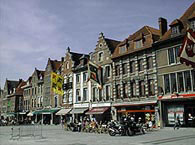
source : Ville de Tournai
The Grand-Place is a good starting point for discovering the city. This beautiful esplanade suffering the pangs of a fire following the bombing of 1940. Many houses were destroyed, but the south side, flanked by the Hall aux Draps, escaped destruction.
… in Monts des Flandres (40 km)
It includes Mont Cassel, Mont des récollets, Mont Noir, Mont des Cats, Mont rouge. Located in part on Belgium, they are at about 40 km from Houplin-Ancoisne and worth the detour. You can restore or drink in the many typical bars of Flanders that you discover at the option of your trip.
… in Ypres (Belgium – 40 km)
The town of Ypres owes its fame to the First World War which still bears the scars. Its new interactive museum "In Flanders Fields" will plunge you also in a unique atmosphere and will help you learn more about this great cataclysm. Beyond its military past, Ypres has other strengths that you discover during a stay between historical and cultural heritage today.
… in Arras (45 km)
The circuit, visits and discoveries from the heart of city
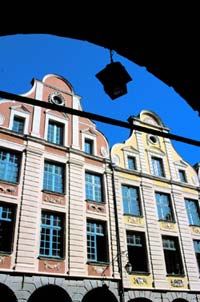
source : Ville d'Arras
The heart of the city of Arras is a mix of history, architecture and heritage : Baroque places; Gothic Town Hall; monuments of the eighteenth century (abbeys, cathedrals, theaters, mansions), Art Deco buildings... Only, with a guide, with horse-drawn carriage rides, all means are good for travel this open-air museum.
… in Bergues (65 km)
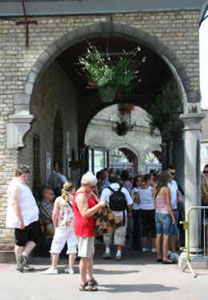
source : Office de Tourisme Bergues
In the Flemish plain, Bergues opens its doors ... Small town, yet fully surrounded with ramparts and nestled at the foot of the belfry, Bergues St. Winoc is one of those Flemish cities where time seems to have no ' sway. The richness of its heritage, gastronomy and its environment will retain the tourist passing through "the other Bruges in Flanders" by hosting and a restoration of quality ...
The classification of the belfry of Bergues in world heritage of mankind and the success of the Film of Dany Boon « Bienvenue chez les ch'tis » have further enhanced its reputation!
… in Bruges (Belgium – 90 km)
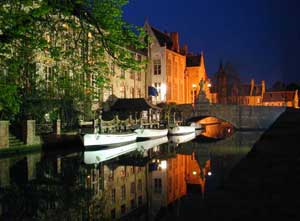
source : Ville de Brugge
Bruges is one of the most beautiful cities in Europe.
It is no coincidence that since 2000, its historic center is on the World Heritage List of UNESCO. At the bend of the winding alleys and romantic canals, several rich and varied museums evoke the fascinating and turbulent history of the city.
And many other countries yet to be discovered in the North, including Flanders, the Opal Coast, the Belgian border, etc ...
Mme DEKEISTER-DUTHOY Nathalie - Ferme de la Pouillerie - 15, rue de la Pouillerie - 59263 Houplin-Ancoisne
Portable : 06 18 47 70 37 - E-mail : gite2390@gmail.com - Page Facebook : Cliquez ici
conception site internet par CREA-FR










